It did not look good for the Geminid meteor shower here in Fairbanks - bad weather forecast and it was snowing almost to midnight before December 14. But then it magically cleared up and stayed clear past 6am in the morning with temperatures around -23°C. I had my D5100 with 10.5mm fisheye (braced on a box) and D7100 with 28mm f/2.8 AIS on fixed tripod out the whole night, powered on AC power, collecting 60GB of image data. The fisheye body exposed for 20sec at f/3.2, and the D7100 at f/2.8 to f/3.2 for 8-15 sec, both at ISO 1600 except the 8sec exposures at ISO 2000. And luckily the two moose that had been hanging around in the neighborhood had not come by and trampled my rigs during the few hours I was asleep.
I noticed some really bright traces by eye that was not caught in any frame, strange how the camera happens to be right between exposures at those moments! In the same line, only one meteor were caught by both cameras even if the 28mm field was completely contained in the field of the fisheye; each camera caught 8 meteors. I aimed west, to the side of the radiation point due to heavy light pollution, and perhaps not the best transparency of the atmosphere. I often see meteors combined into a single frame, but not sure how to do that with this much foreground and star movement, so here we go:
#1

Two meteors in the same frame if one looks closely:
#2
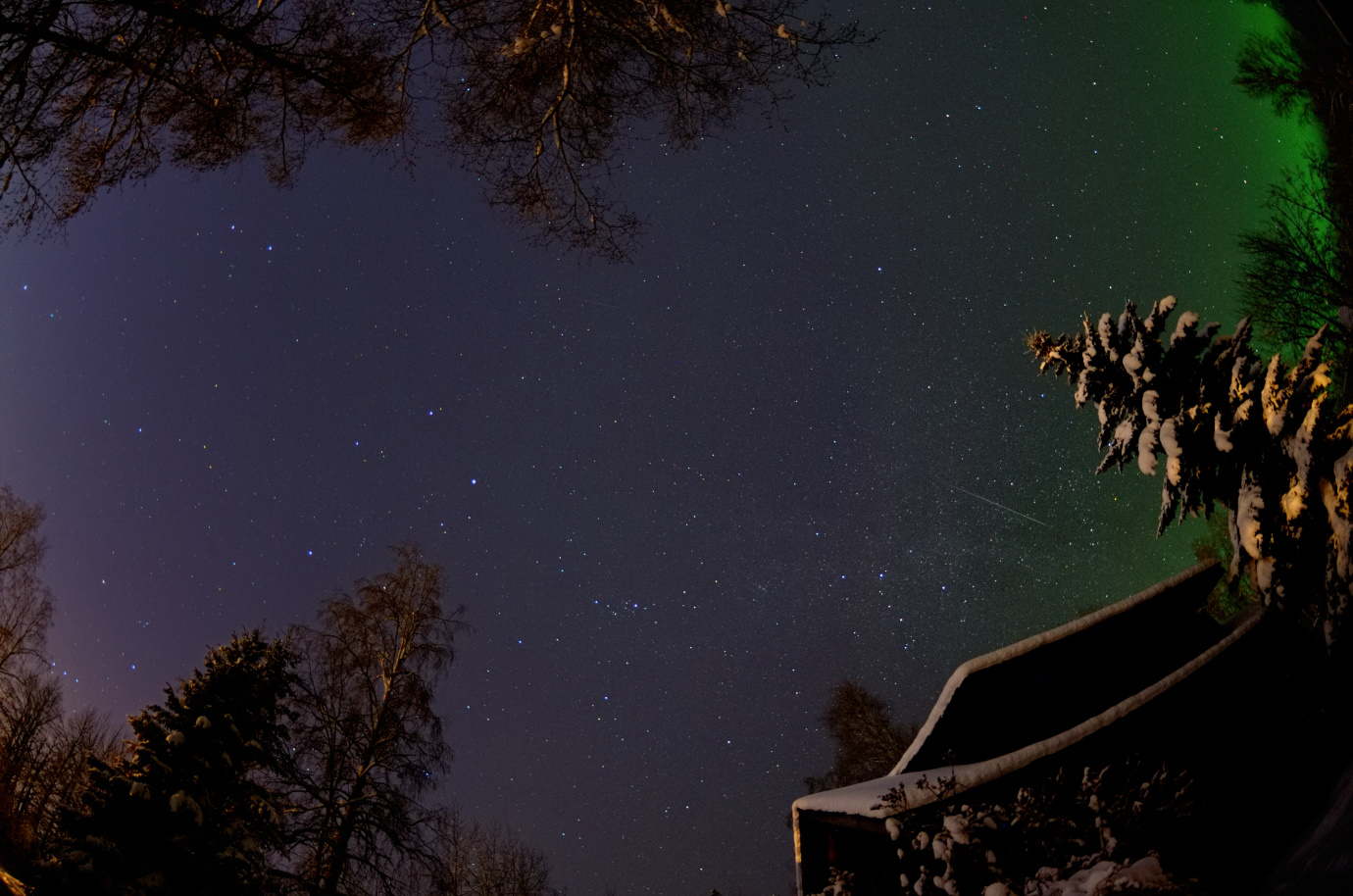
#3
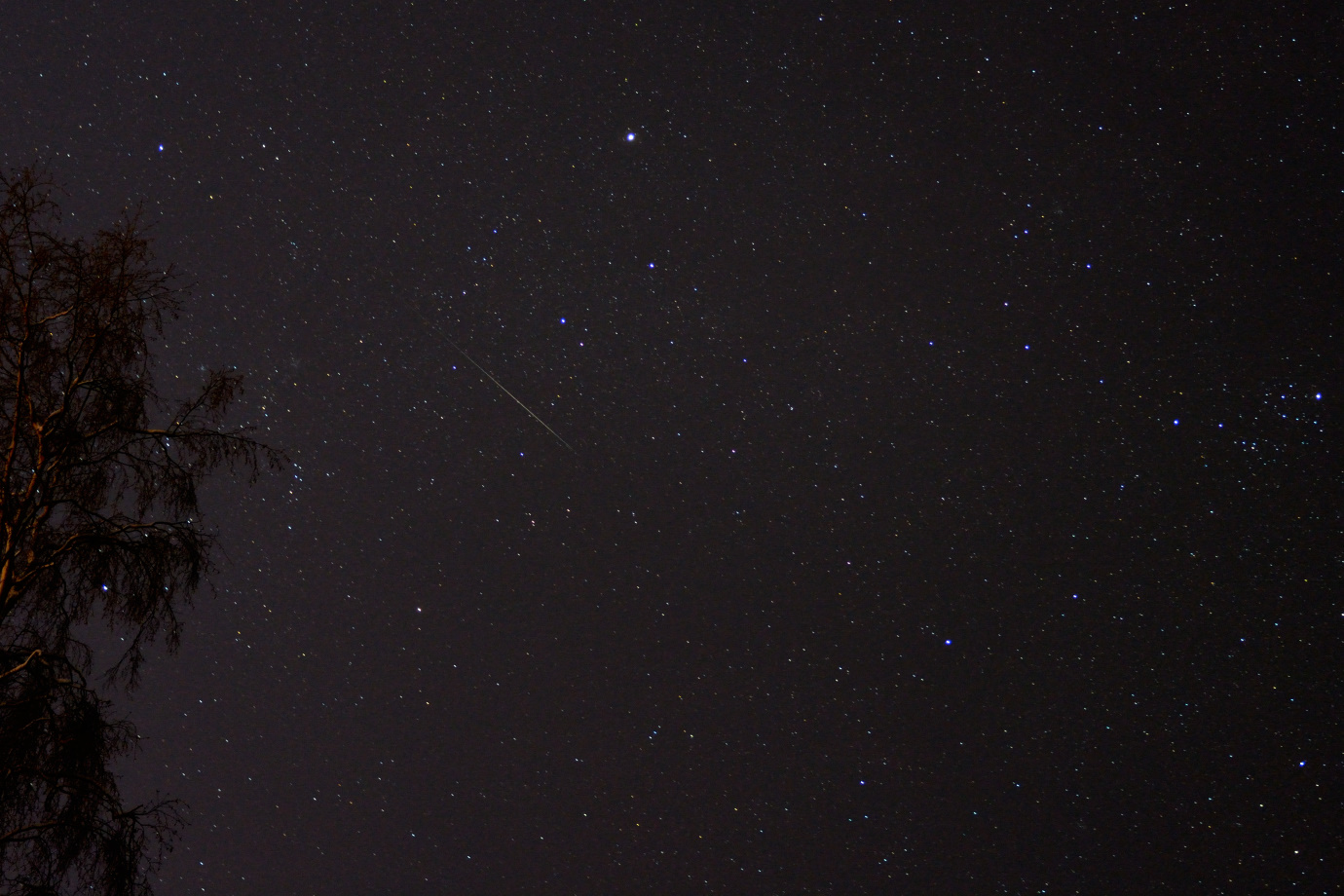
#4
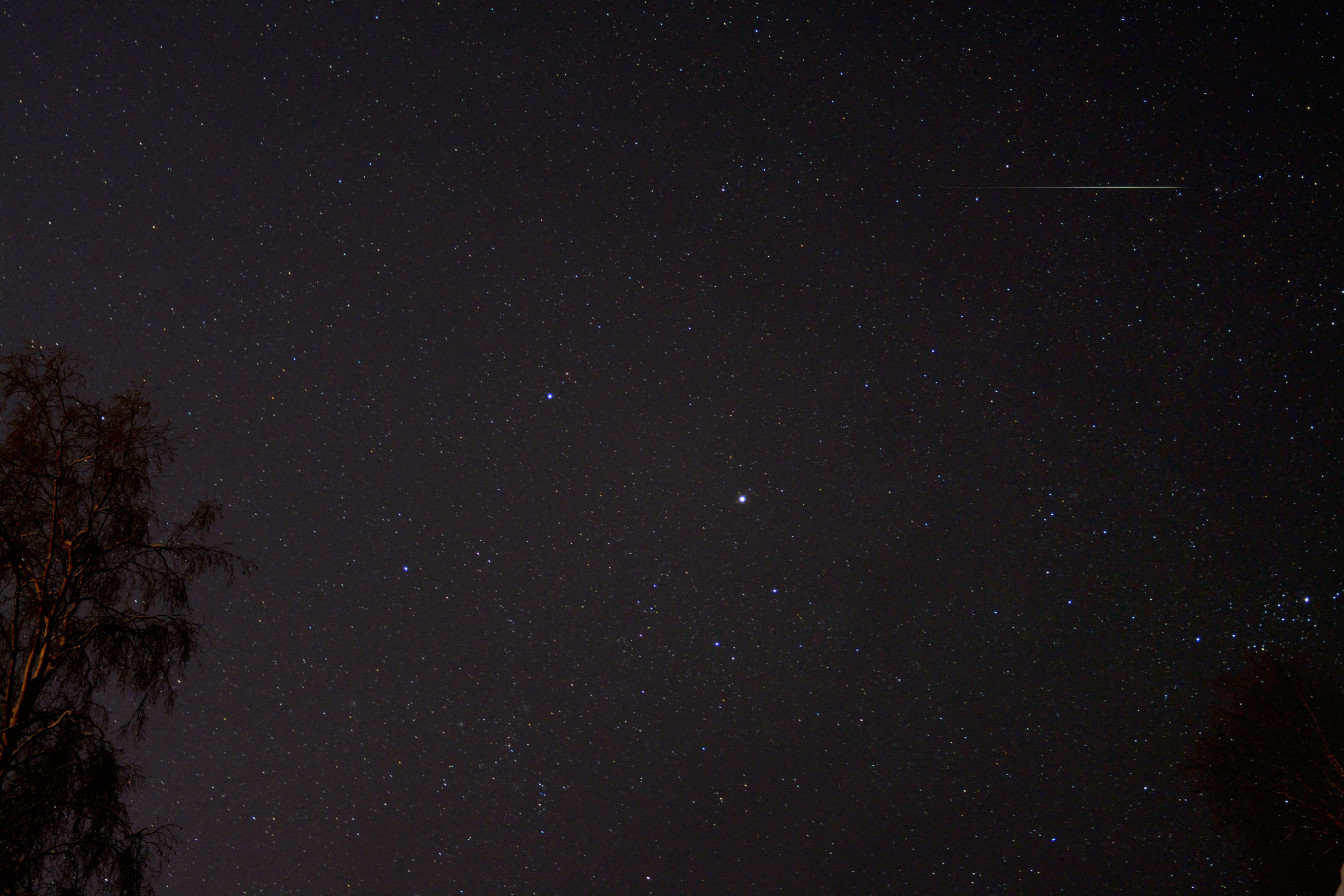
#5

#6
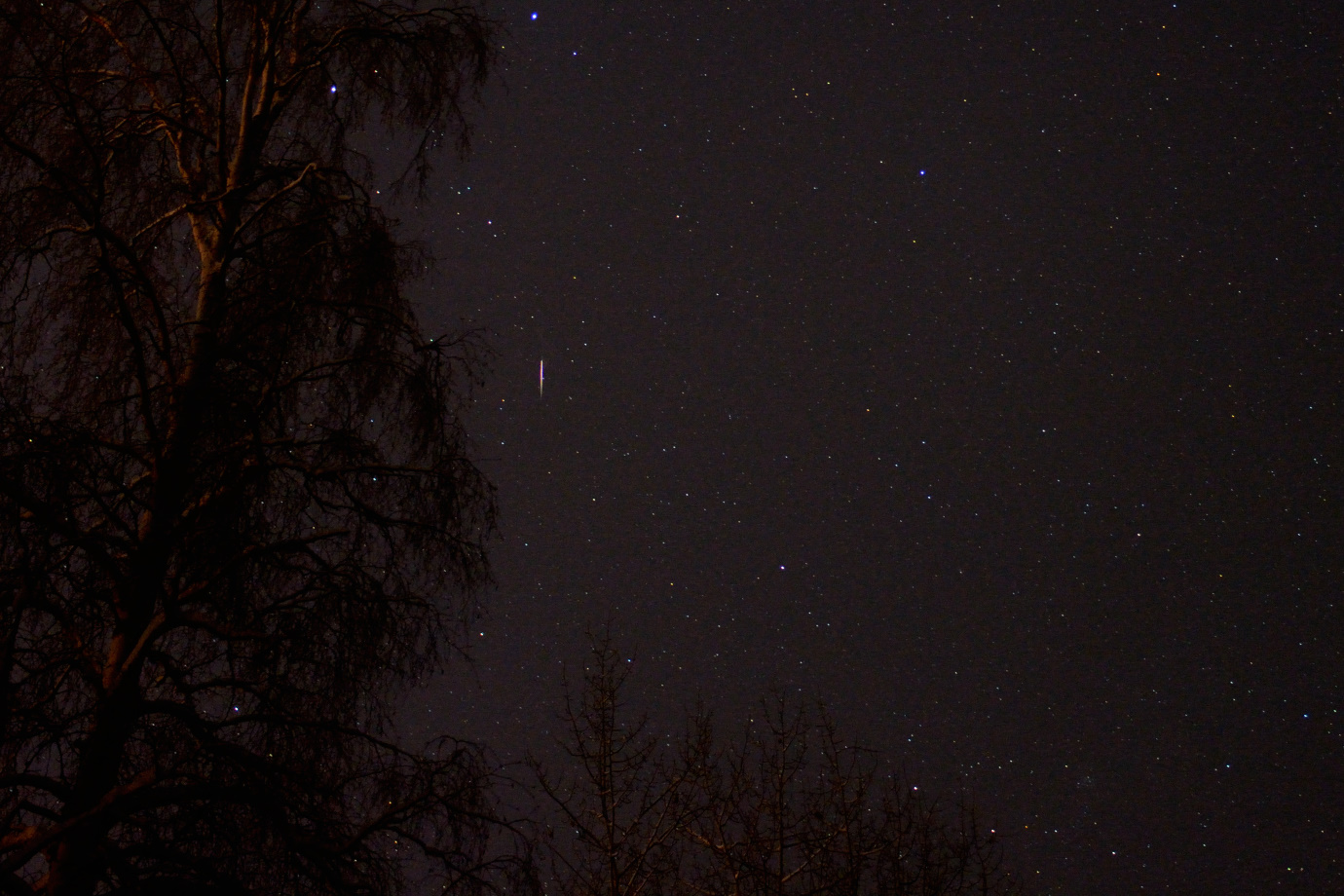
The most frequent meteors were caught around 2-3am, but even at 7am in the morning, a meteor showed through the clouds that were drawing in. This just to show that one should never give up even if conditions are not ideal.
#7
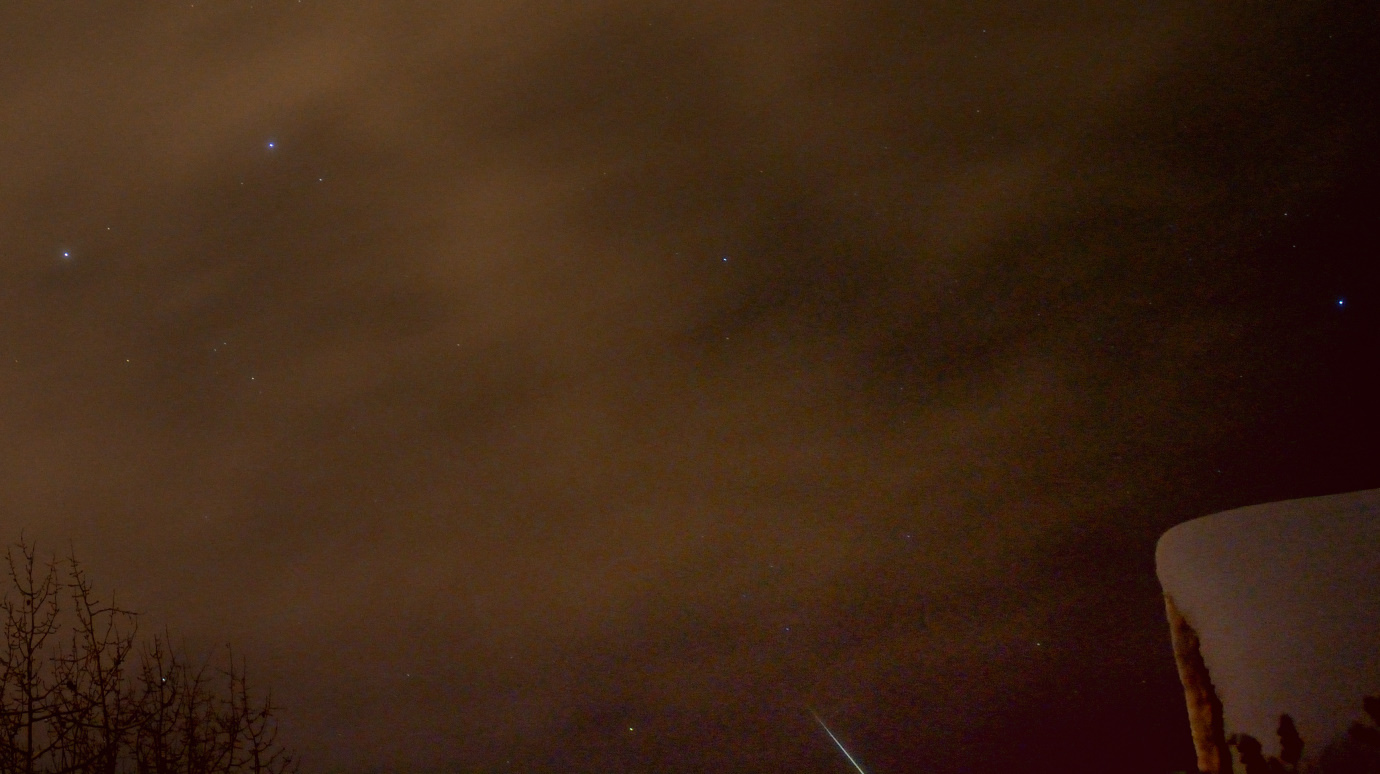
At the very start I made a short tracked attempt on the 46P Wirthanen comet with the 300mm PF before it disappeared behind some trees. While working on framing I caught this trace during an 8sec test exposure. I suspect it is a rotating man made space object as the trace is very narrow, but I got pretty exited right away...
#8
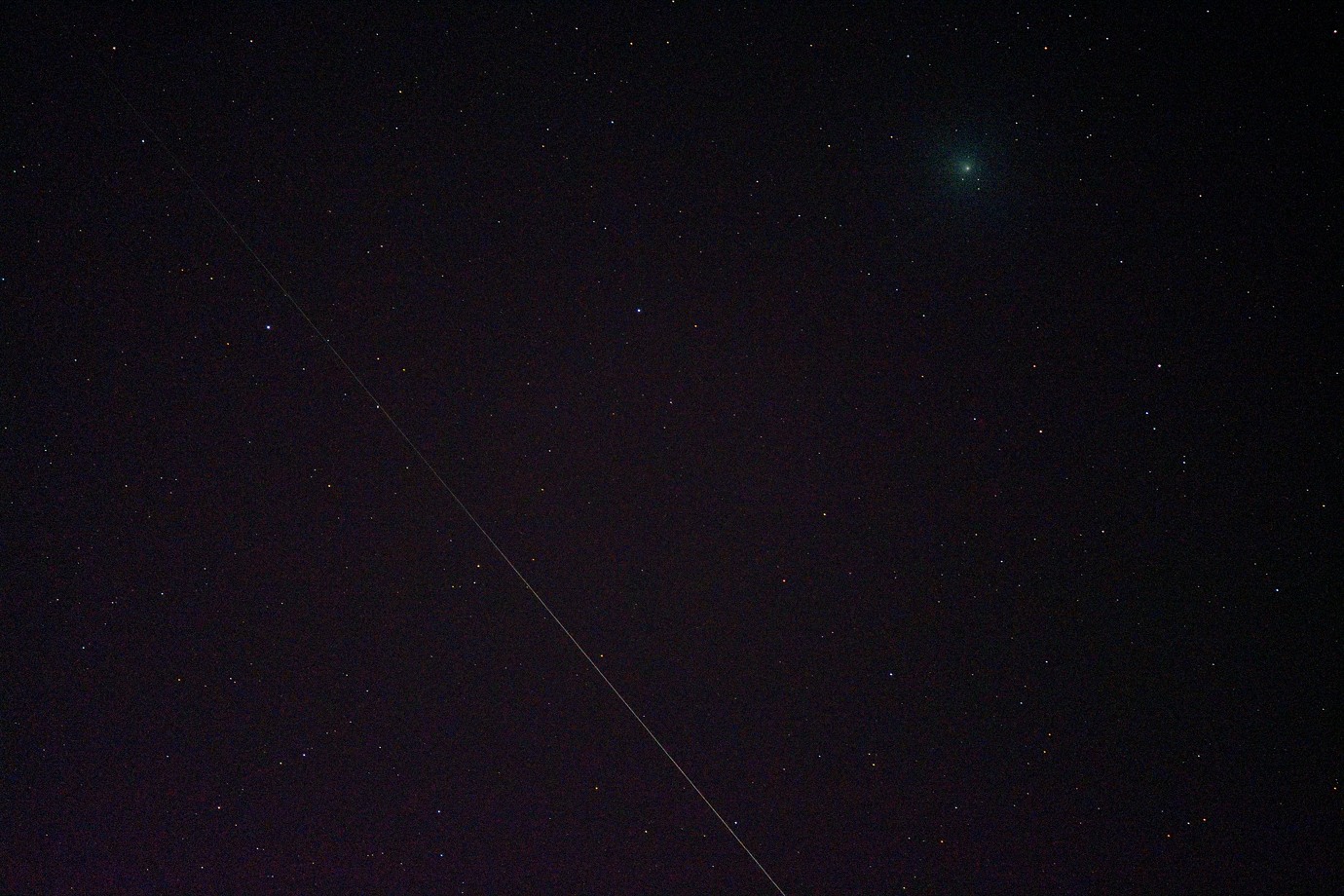
If you have any images of the Geminid meteor shower, feel free to add them to this thread.